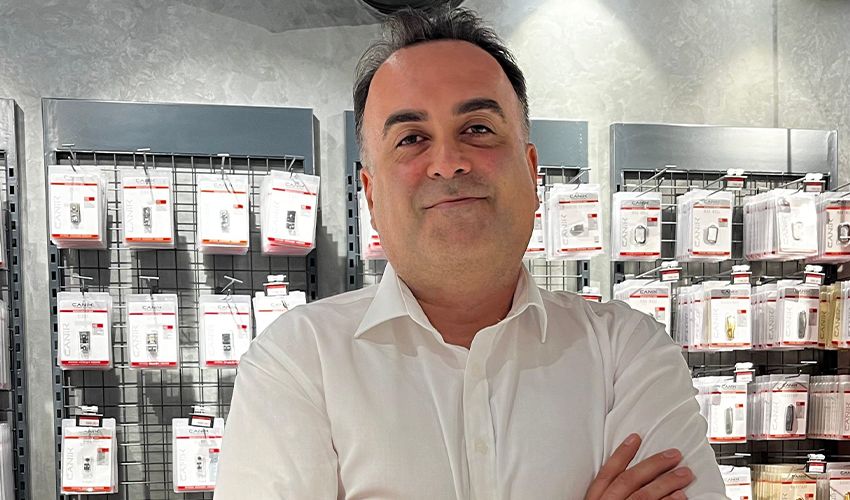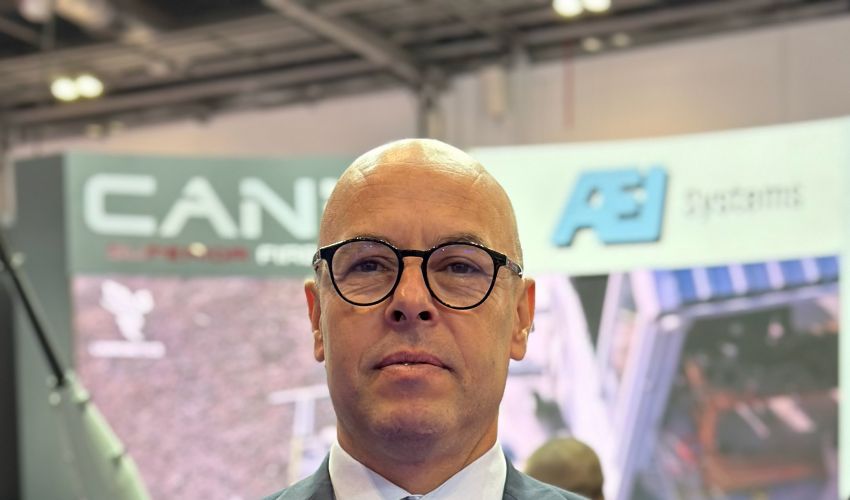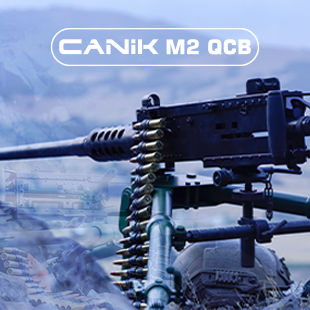TRAKON Lite, Proven in Land and Naval Platform Integration, Prepares to Enter Service in Allied and Friendly Nations
UNIROBOTICS, a subsidiary of the Samsun Yurt Savunma (SYS) group, offers an effective solution with the TRAKON stabilized remote-controlled weapon system (RCWS) family, capable of utilizing a wide range of weapons from 5.56 mm machine guns to 30 mm cannons, and even 40 mm grenade launchers.

TRAKON Lite, Proven in Land and Naval Platform Integration, Prepares to Enter Service in Allied and Friendly Nations
UNIROBOTICS, a subsidiary of the Samsun Yurt Savunma (SYS) group, offers an effective solution with the TRAKON stabilized remote-controlled weapon system (RCWS) family, capable of utilizing a wide range of weapons from 5.56 mm machine guns to 30 mm cannons, and even 40 mm grenade launchers. The smallest member of this family, TRAKON Lite, stands out for its lightweight design, making it a game-changing force for manned and unmanned land and sea platforms with limited payload capacity. Successfully integrated into DEARSAN Shipyard’s SALVO armed unmanned surface vessel (AUSV) for naval platforms and HAVELSAN’s BARKAN 2 unmanned ground vehicle (UGV) for land platforms, TRAKON Lite aims to achieve its first export success before the end of 2024.
UNIROBOTICS began its journey with TRAKON Crew, expanding its operations to transform armaments into weapon systems by adding stabilization and fire support capabilities. The company’s capabilities matured with TRAKON TARGAN, which saw the development of various electronic and mechanical systems, subsystems, and software for features like stabilization, weapon integration, remote control, and integration with combat management systems. Feedback from TRAKON TARGAN, which significantly advanced the company’s capabilities, paved the way for the development of the lightweight and compact TRAKON Lite.
Ömür Baç, General Manager of UNIROBOTICS, emphasized the importance of user feedback in their product development, noting that feedback from HAVELSAN, ASFAT, DEARSAN Shipyard, and other land systems manufacturers greatly enhanced the functionality and user interface effectiveness of their products. Baç stated that TRAKON Lite was developed to integrate 5.56 mm, 7.62 mm, and 12.7 mm machine guns, as well as 40 mm grenade launchers. He added, “The mission computer, other subsystems, servo subsystems, and the entire software infrastructure developed for the TRAKON TARGAN project were utilized in this new project. With feedback from our customers, we quickly developed TRAKON Lite as a lightweight system with remote control capabilities that can meet all weapon system requirements. Because we developed all the software ourselves and fully controlled the development processes, we were able to achieve rapid results when new functions needed to be added.”
TRAKON Lite Hits Target on First Shot from SALVO AUSV
UNIROBOTICS began development activities for TRAKON Lite in 2021, focusing on electronic design and software, with the mechanical design completed in 2023. TRAKON Lite’s entire design, production, and infrastructure updates were finalized in less than a year, thanks to user feedback. Unlike TRAKON TARGAN, TRAKON Lite was integrated wirelessly into an unmanned system right from the start, incorporating advanced engineering capabilities. UNIROBOTICS addressed potential wireless system issues through a detailed safety study and developed a system architecture that mitigates communication delays. In February, TRAKON Lite was integrated into the SALVO AUSV, successfully hitting a target approximately 600 meters away with its first shot.
Next Up: BARKAN 2
Following its integration into SALVO AUSV, TRAKON Lite was integrated into HAVELSAN’s BARKAN 2 UGV. UNIROBOTICS and HAVELSAN first mechanically integrated the system into BARKAN 2, completing various qualifications, including environmental compliance and electromagnetic compatibility (EMI/EMC) tests. Firing tests were then conducted in both stationary and moving positions. In the final stage, all functional tests requested by the user were successfully completed, and UNIROBOTICS delivered TRAKON Lite to HAVELSAN.
Close Collaboration with HAVELSAN
Baç noted that UNIROBOTICS’ collaboration with HAVELSAN began in 2021 during the development of TRAKON TARGAN and added that they worked closely with the HAVELSAN team. He described the process: “We received direct feedback from HAVELSAN in many areas. We planned and managed the projects together. During the TRAKON TARGAN project, we also initiated discussions with the unmanned systems team regarding the integration of KAPGAN and BARKAN 2. Leveraging their experience during the system development phase was invaluable for us. Initially, we integrated the TRAKON turret equipped with the CANiK M2 QCB heavy machine gun into the KAPGAN prototype. Subsequently, the integration of TRAKON Lite with a 40 mm grenade launcher into BARKAN 2 became a reality. We are currently in the final phase of this integration, with all tests completed.”
UNIROBOTICS Ready for Other Armaments
Baç also expressed UNIROBOTICS’ intention to integrate different armaments that TRAKON Lite can carry into BARKAN 2, in addition to the 40 mm grenade launcher. He stated, “BARKAN 2 is a platform capable of carrying both 40 mm grenade launchers and 12.7 mm heavy machine guns. We can easily carry out all our integration activities with this vehicle. We are happy to be HAVELSAN’s subcontractor for weapon systems, and we are making efforts to ensure they use the weapon systems we develop. We discussed opportunities for unmanned ground vehicle projects abroad, especially in the international market at the Eurosatory 2024 fair. We strongly support HAVELSAN’s success abroad as their subsystem supplier.”
Production Capacity to Be Increased
TRAKON Lite will be integrated into manned ground vehicles in a project starting in September, as it has proven its success in unmanned systems with SALVO AUSV and BARKAN 2 UGV. UNIROBOTICS will work with a Turkish armored vehicle manufacturer and another naval platform producer in Türkiye, as well as conduct an integration project with an armored vehicle manufacturer abroad. In 2024, UNIROBOTICS plans to integrate more than 20 TRAKON Lite units into different platforms, with an increase in production capacity. The goal is to ramp up production to 100 units by 2025 specifically for TRAKON Lite. UNIROBOTICS officials are also meeting with potential international customers to achieve this goal. Reflecting on their participation in the Eurosatory 2024 fair, Baç said, “We showcased our products at the fair. TRAKON Lite, particularly when equipped with the 12.7 mm heavy machine gun, attracted significant attention. It is being followed with great interest in Europe, Africa, and Southeast Asian countries. Our discussions regarding projects in these regions are ongoing.”
Operations Spanning Istanbul and Samsun
UNIROBOTICS, a high-tech firm specializing in robotics, operates facilities across three different locations within the Dudullu Organized Industrial Zone in Istanbul. The company also has a presence in Samsun. Product design, electronic production, and mechanical manufacturing are conducted in Istanbul, while machining, coating, and painting processes are carried out in a 2,000-square-meter area at CANiK’s new factory in Samsun. Once the new facility under construction in Ömerli, Istanbul, is completed, system-level integration activities, quality controls, testing, and calibration operations will be consolidated into a single space of over 10,000 square meters. UNIROBOTICS aims to produce more than 350 systems annually, including TRAKON, TRAKON TARGAN, TRAKON 30, TRAKON Lite, and TRAKON Crew, within two years following the moment all its facilities are fully operational.
Weapon Turret and Armament Supplied from a Single Source
One of the key advantages of TRAKON Lite is that both the weapon turret and the armament itself are supplied by the same source. Baç emphasized this point, saying, “Our group companies manufacture 12.7 mm heavy machine guns and 30 mm cannons. This allows the user to deal with a single source for armament and turret integration. Having a single point of responsibility for production and logistical support increases efficiency by ensuring accessibility, system continuity, and ease of maintenance and service.”





